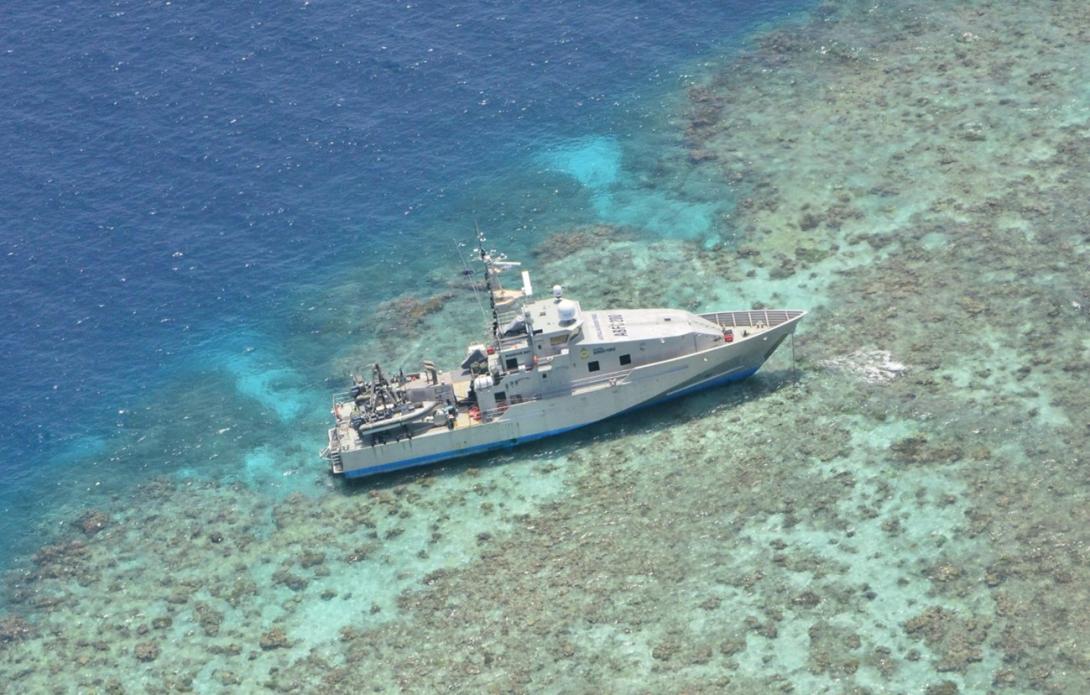The ATSB investigation of the grounding of the Australian Border Force Cutter (ABFC) Roebuck Bay on Henry Reef has revealed underlying safety issues with the effectiveness of ECDIS type-specific training, ECDIS software updates and the use of a single point feature to represent relatively large physical features on electronic navigational charts.

While planning the passage from Saibai Island in the Torres Strait Islands archipelago to Lizard Island, south-east of Cape Melville, ABFC Roebuck Bay’s previously used passage plan was amended, with its route inadvertently plotted over Henry Reef.
The ship’s electronic chart display and information system (ECDIS) identified the reef as a danger to the planned route, however, the crew did not identify the danger either visually or by using ECDIS. The vessel continued on the amended route and grounded on Henry Reef just after midnight. There were no reported injuries or oil pollution, but the vessel sustained substantial damage.
The ATSB found the crew’s ability to check the amended route was limited as their training was not effective in preparing them for the operational use of their on board ECDIS.
The ATSB‘s investigation highlights that the safe and effective use of ECDIS as the primary means of navigation depends on operators being thoroughly familiar with the operation, functionality, capabilities and limitations of the specific equipment in use on board their vessel.
“ECDIS type-specific training needs to be designed, delivered and undertaken so operators have the required knowledge to confidently operate ECDIS as intended by the manufacturer,” ATSB Chief Commissioner, Greg Hood said.
The ATSB also found the vessel’s ECDIS was not updated to the latest International Hydrographic Organization (IHO) standards and lacked the enhanced safety features of a new presentation library of symbology.
The ATSB reminds regulators, manufacturers, hydrographic offices and other concerned parties that their ultimate goal must be to eliminate the significant risks with the use of ECDIS or at least reduce them to an acceptable level in terms of navigational safety.
“Like all on-board equipment, ECDIS needs to be maintained and compatible with the latest applicable standards,” Mr Hood said.
“With the recent introduction of ECDIS as the sole means of marine navigation and the replacement of paper charts, the grounding was an opportunity for the ATSB to explore any potential safety impact of ECDIS in a real-world operational environment.”
The investigation involved interviews with Australian Border Force officers, crew and shore staff and hydrographers from the Australian Hydrographic Service and the ECDIS manufacturer. Extensive ECDIS analysis was also carried out, as was various ECDIS simulations and testing.
“As a result of the investigation, the ATSB considers the use of point features in electronic navigational charts to represent areas of relatively significant size on the earth’s surface is likely to increase the risk of the hazard posed by such features being misinterpreted and potentially reduce the effectiveness of ECDIS safety checking functions,” Mr Hood said.
“While this did not specifically contribute to the grounding of Roebuck Bay, the investigation has shown that the implementation of ECDIS has introduced some unintended risks to marine navigation.”
The ATSB recognises that ECDIS and electronic navigational charts are an essential tool for navigation with many safety benefits; however, operating crew need to be aware that navigating with ECDIS is fundamentally different from navigation with paper charts.
“By allowing operators to view and change an electronic navigational chart to a larger compilation scale, ECDIS can make single point features representing rocks, wrecks and other obstructions appear progressively smaller as the scale is changed, creating the impression it is clear of a ship’s route or further away than what it actually is,” Mr Hood said.
ECDIS is a complex software-based system and the ATSB acknowledges the many challenges faced in its design, manufacture, and operation to ensure navigational safety.
“The ATSB safety message from this investigation reminds regulators, manufacturers, hydrographic offices and other concerned parties that their ultimate goal must be to eliminate the significant risks with the use of ECDIS or at least reduce them to an acceptable level in terms of navigational safety,” Mr Hood said.
Read the report: Grounding of ABFC Roebuck Bay, on Henry Reef, Queensland, on 30 September 2017


